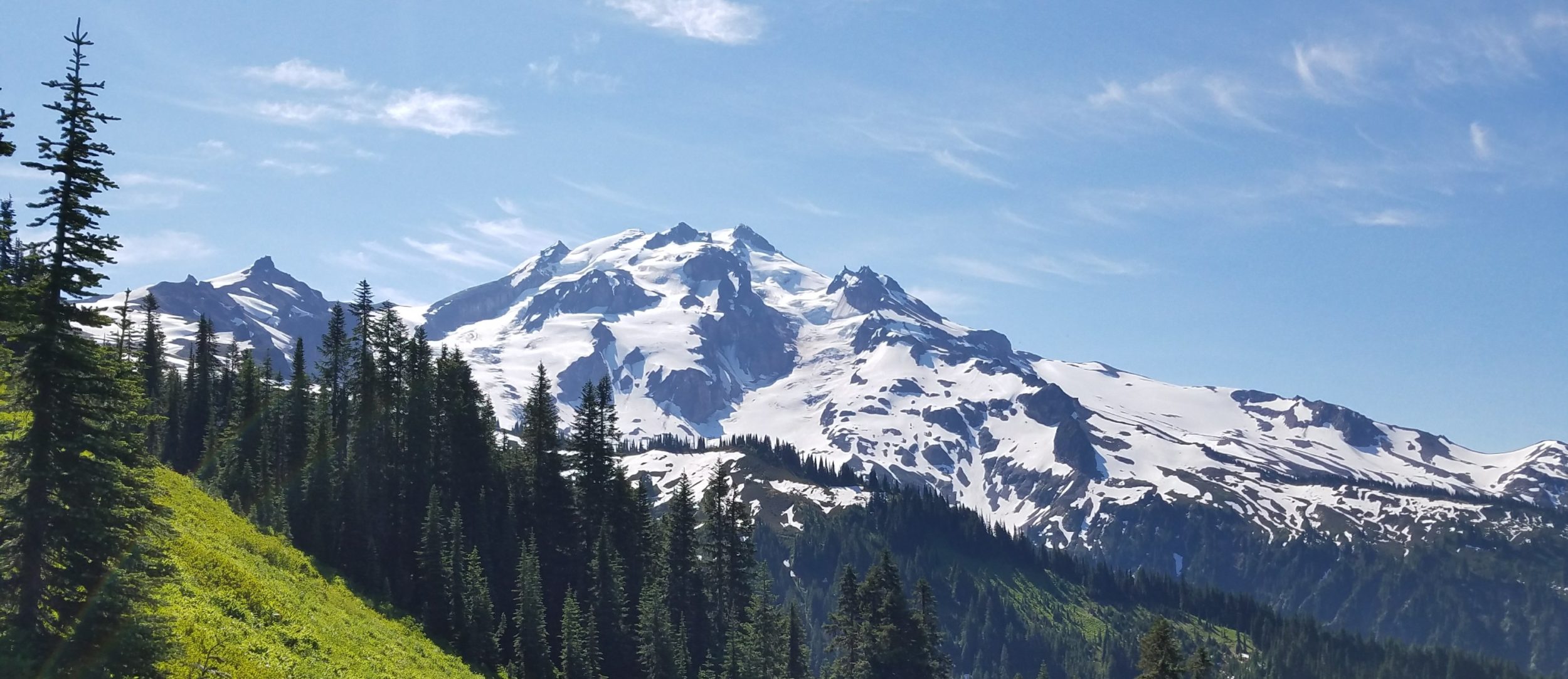Friday, April 28th, 2023, 0645-1910
Mile 35 of Bryce Extension to 1.5 miles south of LeFevre Cabin
28 miles, elevation 5900′
This was one of my longest days on the Hayduke and it certainly felt like it at times. We got an early start and immediately enacted new plans. Overnight, we’d noticed that we could take a lower elevation route called the Grandview Trail. It stayed well below the rim and outside the park, only rising to 7900′. The main Under the Rim route would have taken us over 9000′ and we’d already been encountering a lot of snow at much lower elevations. For some reason, the south end of the park seemed to be holding more snow, perhaps because a lot of it was in a burn area. We’d already seen the best parts of the park the day before, so it didn’t seem like we’d be missing out on much.
It was a good call, based on the footage Mac later shared on Instagram. He stuck with the higher route and ended up postholing in hip-deep snow for many miles. We started with some very easy miles through one of the most beautiful ponderosa pine forests I’d ever seen. There was lots of evidence of elk, but I never spotted any. Then we came to the first switchbacks going over a ridge in a burned area, which became the theme for the next 8 miles. The trail became hard to follow, even though it used to be an old road. The burn obliterated a few of the switchbacks and caused a lot of blowdowns, as was typical. Worst of all, the successional plants were all some sort of spiny bush and scrub oak. I felt like I was shadow boxing with the stuff all morning. It was growing in the middle of the trail much of the way, grabbing at me everywhere and smacked me in the face repeatedly. I was so sick of it after a few hours.
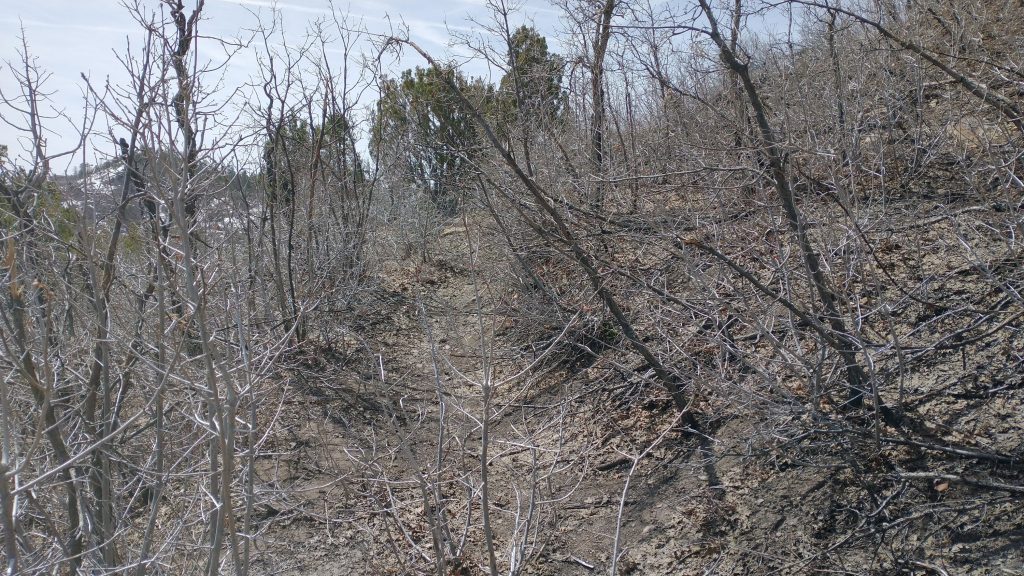
Bushwhacking was one thing, but about a quarter of the time we were also marching through snow. I kind of enjoy walking over snow, but not when trying to push through scrub oak and step over downed logs, while also worrying about slipping and postholing.
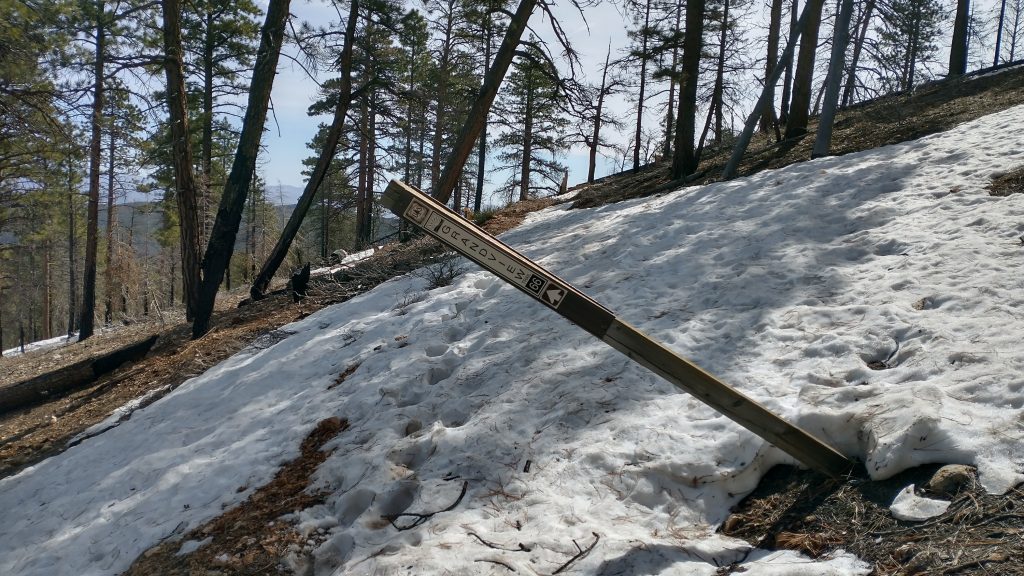
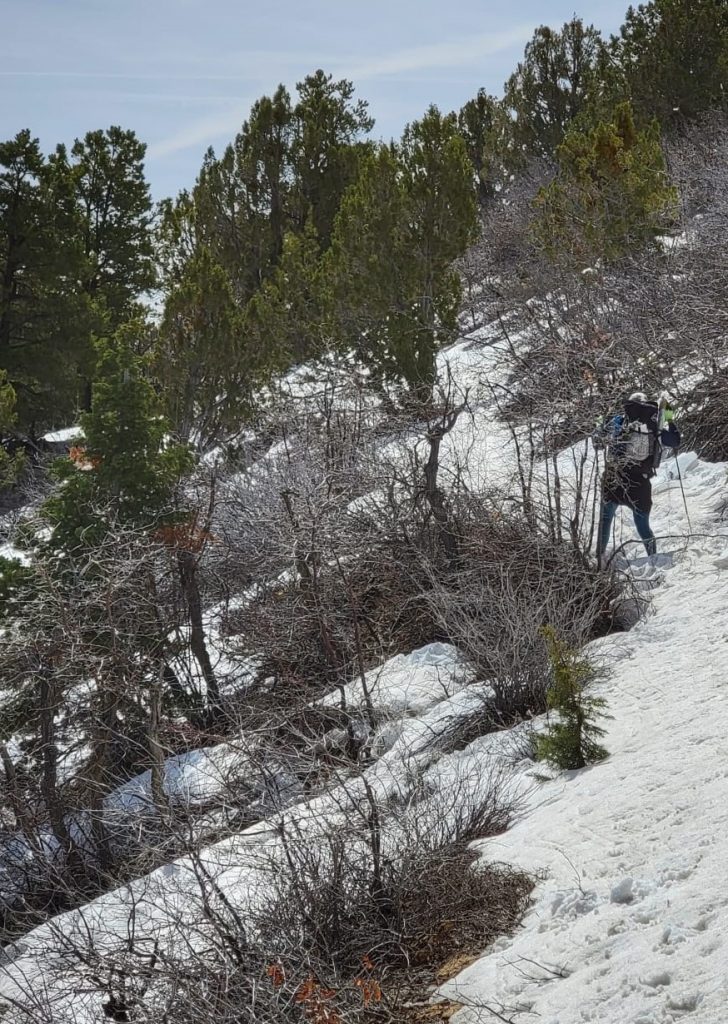
The only sketchy part was a steep and cluttered ravine, the headwaters of Bull Valley Gorge. The trail traversed alongside the creek for a stretch, with a treacherous slide into the creek and rocks. It was the sort of thing you’d want an ice axe for but we had none, so just had to slowly kick steps and not slip.
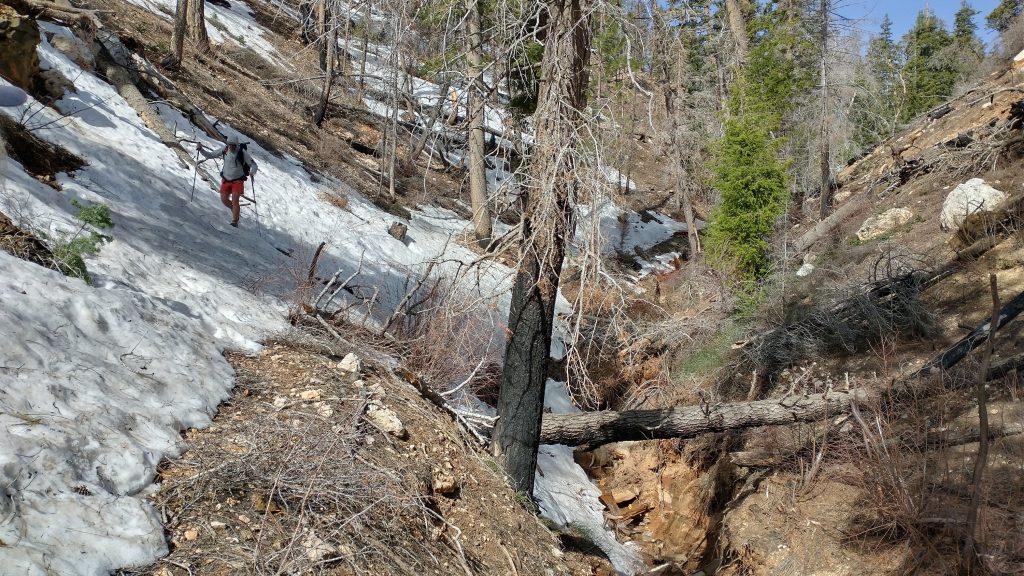
It was a tedious trail, overgrown and faint a lot of the way, plus 5 decent ups and downs over ridges. But any time I grew tired of it, I imagined the upper trail conditions (or no trail at all), and counted my blessings. By lunch, we’d come to the junction with the red line and the southern end of the park boundary. We took a long break of over an hour, but in that time still didn’t see Mac. We figured he’d been significantly delayed by the snow.
The afternoon was very chill, just walking down some dirt roads and a wash through Bullrush Gorge. We left the forest behind and rejoined the juniper scrub. We came to the LeFevre Cabin and water tank just in time for an early dinner. We sat under a huge ponderosa next to the historic cabin and a giant sandstone wall, enjoying the western ambiance while we ate. We hadn’t seen another person all day but that was about to change. We heard cows coming and so we started moo-ing back, as we were apt to do for some reason. Then 2 cowboys appeared, wondering who or what was making such bad cow noises. I was a little embarrassed but the father \ son duo were really nice, telling us some of the history about the place. They were the LeFevres and the father’s grandfather had started cattle ranching in the valley in the 50’s…this was his cabin that he overwintered in. We mused about what a tough life that must have been.
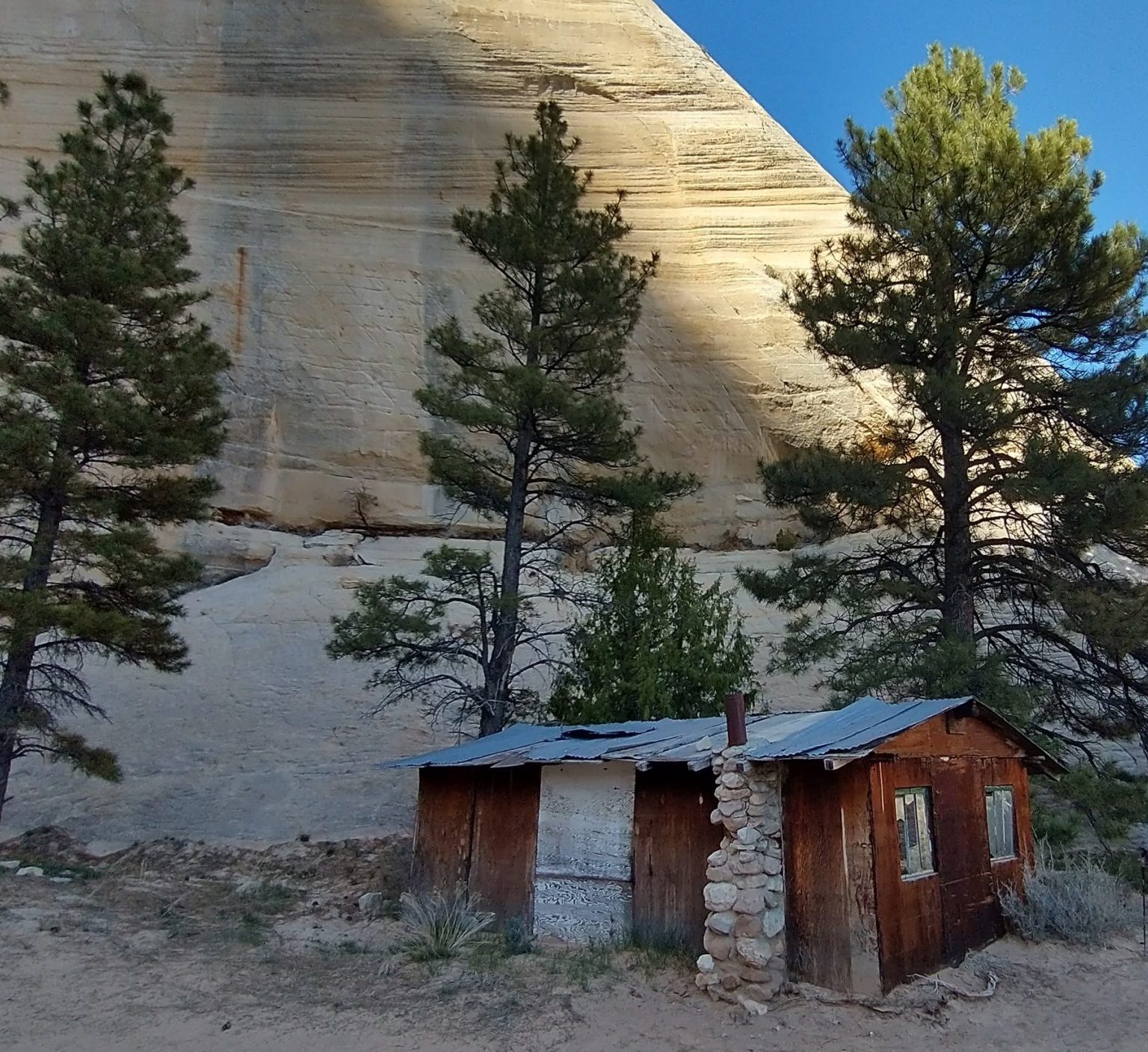
While I’ve made it abundantly clear that I’m not a fan of cattle ranching in the SW, I had to concede that their herd looked very healthy and well taken care of. The fact that they were present and actively moving the herd around to achieve the best grazing outcomes showed they cared. They’d been stewards of this valley for over 70 years, after all. And we certainly appreciated their water trough, with some of the nicest cow water I’d ever collected. I’m glad we got to meet them and had a positive experience.
The cowboys invited us to stay in the cabin, but it was a bit too mice infested and the weather too fine. We moved on another couple miles, settling on a small side wash. It had the finest white sand, just like the kind found on the 10,000 island beaches in Florida. I felt right at home. In retrospect, it was a rather poor site, since there was no tree cover. But after such a long day, we didn’t feel like spending a lot of energy looking for something better and simply settled.
